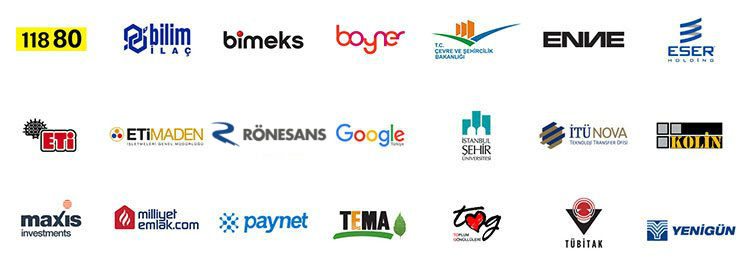
Contracts form the basis of a company's business relationships and commercial commitments.
But when this foundation is not managed soundly, everything built upon it risks collapse.
Many organizations operate in a state of “contractual chaos” without realizing it.
This situation is not just an irregularity, but a serious risk that threatens the future of the company.
The Definition of Chaos: Lost Contracts and Overlooked Risks
The fundamental problem with contract chaos is the lack of control, visibility and standardization.
Contracts are scattered throughout employees’ desk drawers, personal email inboxes, and shared drives across departments.
No one knows which contract is the most current version.
Critical renewal and termination dates are consistently missed.
When senior management asks a simple question about the company's total contractual obligations or risk exposure, no one can provide a clear answer.
This situation is like the company walking blindfolded through a minefield.
Not Just Disorder, But a Strategic Threat
The clutter created by this chaos is not just an annoying administrative burden; it is a strategic vulnerability that directly threatens the financial health and legal security of the company.
Studies show that 71% of companies cannot accurately track the whereabouts of at least 10% of their contracts.
This means that commitments and risks worth tens of millions of pounds are completely invisible.
The consequences of this situation could be devastating.
-
Financial Losses: A missed auto-renewal clause can lock a company into years of unwanted service or exorbitant prices.
-
Legal Sanctions: Failure to follow compliance requirements (e.g. KVKK, GDPR) results in heavy fines and reputational damage.
-
Operational Paralysis: The unexpected termination of a key supplier contract could cause a complete halt to production or service.
-
Audit Failures: Failure to provide required documentation during an audit creates a serious crisis of confidence among both internal and external stakeholders.
This chaos destroys opportunities and exposes the company to unnecessary risks.
From Chaos to Control: A 4-Step Framework for Fixing Poor Contract Management
Breaking free from contract chaos and regaining control may seem like a daunting task, but it is possible with a systematic approach.
This is not just about cleaning up the mess, but about building a solid foundation that will prevent this chaos from reoccurring in the future.
Here's a four-step strategic framework you can follow to achieve this transformation.
What are the main causes of poor contract management?
Poor contract management is often caused by several factors.
The most common is the lack of a central storage system, which results in contracts being scattered across different departments.
Other key reasons include a lack of standardized processes and policies, unclear roles and responsibilities, and a lack of use of technology for proactive monitoring.
Understanding these root causes is the first step in creating a lasting solution.
Step 1: Assess the Current Situation (An Honest Audit)
The first step is to honestly confront your current situation.
Take inventory of existing contracts by interviewing all departments.
Ask these questions: Where are contracts stored? Who has access? What tools are used (Excel spreadsheets, shared folders)? What is the approval process like?
This honest audit allows you to clearly see the extent of the problem and establish a starting point for a solution.
Step 2: Create a Single Source of Truth (Central Repository)
The most critical step to defeating chaos is to create a centralized, digital, and secure “single source of truth” for all contracts.
This is a system where all contracts are stored in a standard format and are easily accessible to authorized persons.
How to create an effective contract repository?
An effective repository is not just a storage folder.
Secure Access: Set role-based access permissions to control who can view, edit, or download which agreement. Version Control: Avoid confusion by always using the most current and approved version. Powerful Search Capability: Let users find the right document in seconds based on criteria like keyword, date, party, or agreement type.
This central repository forms the basis for visibility and control.
Step 3: Standardize Responsibilities and Processes
Even if you have a central repository, chaos will return if your processes are not standardized.
Create a policy that clearly defines who can request a contract, who can draft it, who can approve it, and who can sign it.
Establish a simple, standard workflow that should be followed from contract creation to signing.
Why is standardization important in contract management?
Standardization ensures consistency and efficiency.
Having everyone use the same templates and processes reduces errors and ensures that every contract adheres to the company's legal and commercial standards.
It also makes it easier for new staff to adapt to the process and eliminates dependency on individuals.
Without standardization, every contract becomes a new adventure and a potential risk.
Step 4: Use Technology as an Accelerator
Manual processes are the main cause of chaos, especially for large volume contracts.
CLM (Contract Lifecycle Management) software is the most powerful tool to implement this framework.
These technologies automate centralized repository, standard workflows, and approval processes.
It sends automatic reminders for critical dates, simplifies compliance tracking, and provides valuable data for performance analysis.
Technology is not a cost in this transformation, but an investment that ensures control and efficiency.
Result: Strategic Advantage of Order
The shift from contractual chaos to control is not just an administrative improvement; it is a fundamental strategic transformation.
When you gain full visibility and control over your contracts, you proactively manage risk, maximize value, and make your department an indispensable asset to the company's success.
Order brings not only efficiency but also a strategic advantage.







